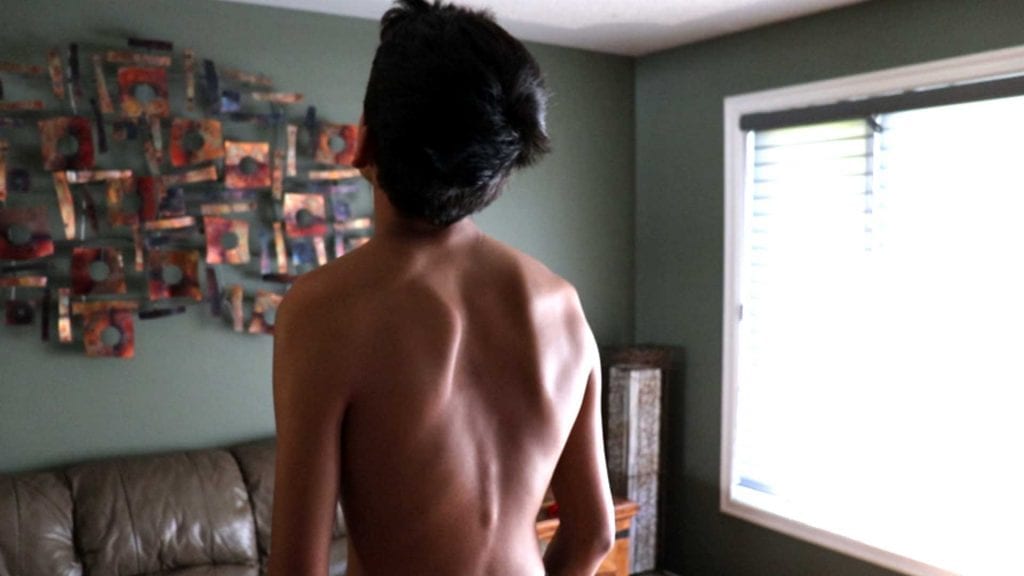
Daniel took off his shirt to show APTN the Sprengel’s deformity on his back. Photo: Cullen Crozier/APTN
When Daniel first walked through the front doors of his new home, to Sandra and her family he seemed like just your typical 12-year-old kid.
Tall for his age, skinny, a head full of unruly hair that seemed to shoot out in every direction at once. Maybe a little quiet, a little shy, but that’s to be expected coming into a strange new home, meeting a new family for the first time.
What they couldn’t have known at the time was how much pain Daniel was living with on a daily basis.
Sandra and her family knew when they moved to a small town in northwestern Ontario five years ago, they wanted to give back to the community that had welcomed them in.
Part of Sandra’s work has to do with helping vulnerable youth caught up in Ontario’s child welfare system.
“Moving into this territory, I never imagined the magnitude of pain here,” Sandra says from her office.
“When I would sit with these youth and they would tell me these stories, I would think they were exaggerating, they’re telling me things that can’t be true. And when I fact checked their stories, more than 90 percent I could directly verify, and it broke my heart.”
Seeing the trauma that children were facing in the system, Sandra, her husband and two sons made a decision as a family that they would become temporary caregivers to at-risk youth in the community – their way of helping to address the significant gaps in care Sandra was witnessing first hand.
“Looking at these children and as a mother, if these were my kids, I would not accept it,” Sandra says. “If these were my kids, I would do everything I could to demand change and as a mother that’s what I’m going to do.”
Their family lives in a modest home in the suburbs. A two-story house, two car garage, two growing boys – bicycles lay scattered on the front lawn, dirty sneakers are piled up in the porch.
They weren’t wealthy be any means, more blue collar, but there are different forms of wealth and what they could provide was a caring family and a stable home filled with love.
“Being able to invite kids into our home and trying to invest in them and love them and provide safe homes,” Sandra says.
“You hear all the time that there are not enough safe homes. So just to be able to offer whatever we could with whatever we had available to us.”
When Daniel first came into their lives, in the spring of 2018, it was only supposed to be for a few months.
The family he had been staying with for the previous 10 years were moving to a different community, and Daniel was going to be taken out of school, something the boy and the child welfare agency responsible for his care wanted to avoid.
“There was a routine disruption in the family life in his other home and he wanted to stay in school. They wanted to have continuity in education for that time period,” Sandra recalls. “So they just asked us if we could bring him into our home until the school year was done.”
Daniel is First Nations and has been in the care of Weechi-it-te-win Family Services since he was days old.
Weechi-it-te-win is a First Nations child welfare agency also known as Indigenous Wellbeing Societies in Ontario. They provide services to 10 First Nations communities in northwestern Ontario (Treaty 3).
The agency says Daniel is under what’s known as a customary care agreement. Daniel’s lawyer is seeking proof of that.
Customary care agreements are meant to keep Indigenous youth in the child welfare system connected to their family, culture and community.
Sandra and her family are not Indigenous and were somewhat confused at first as to why they were selected to be caregivers under the customary care model.
“They literally called me and asked us to become customary care givers,” Sandra remembers. “I said you have the wrong phone number. And they said no, your home has been identified as a safe home for our kids.”
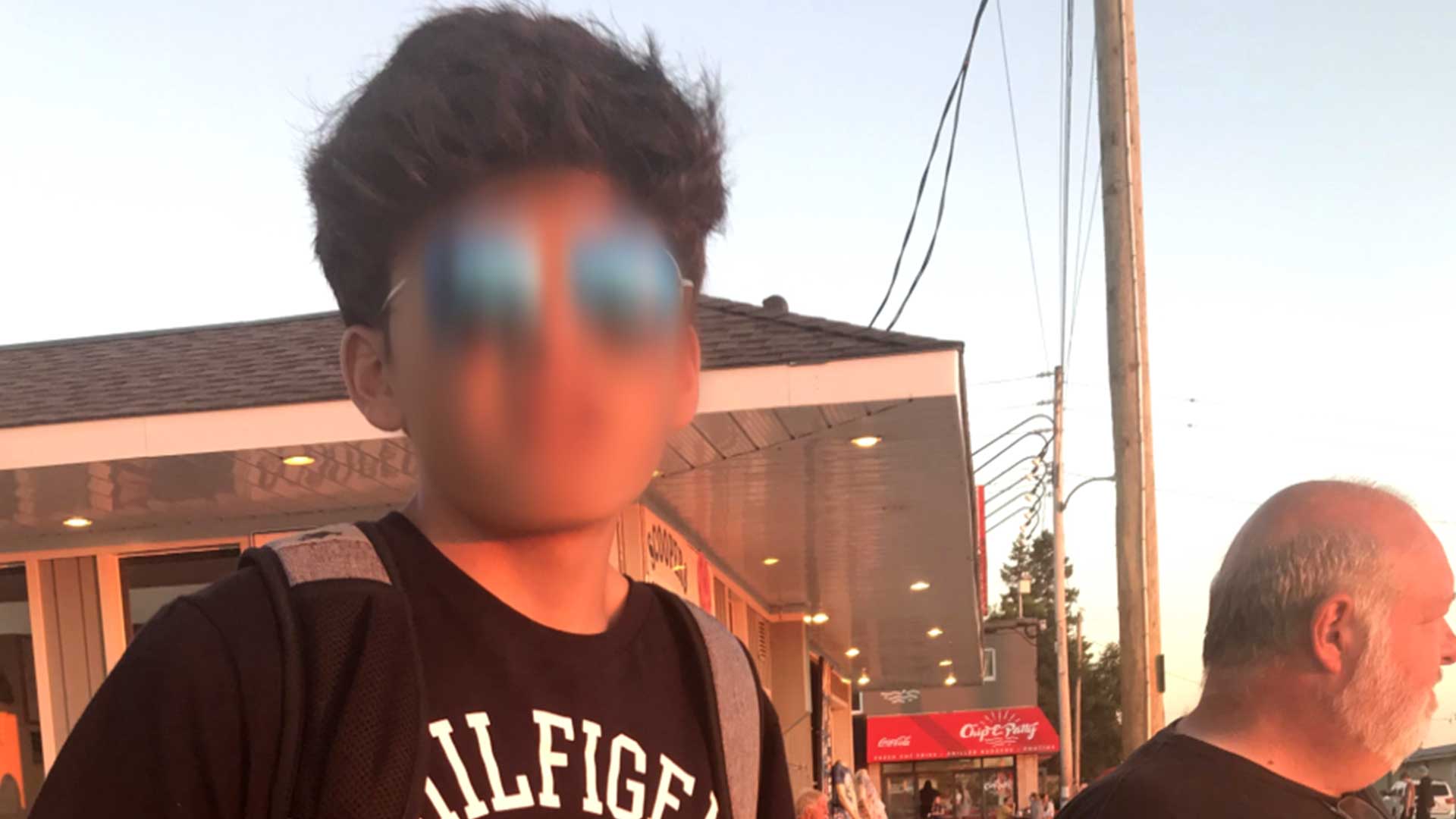
When Daniel first walked through the front doors of his new home, to Sandra and her family he seemed like just your typical 12-year-old kid.
Tall for his age, skinny, a head full of unruly hair that seemed to shoot out in every direction at once. Maybe a little quiet, a little shy, but that’s to be expected coming into a strange new home, meeting a new family for the first time.
But kids have a way of adapting to new environments with remarkable ease, and it didn’t take too long before Daniel started bonding with his new family and falling into a routine.
What Sandra couldn’t have known at the time was how much pain Daniel was living with on a daily basis.
“He started becoming closer to our boys, and our family,” Sandra remembers.
“He didn’t have siblings in the same age group in the home where he had been placed.
“Eventually when the other family said that it was time for him to come back, he essentially refused. He said, I’m not leaving, this is my home now and I’m not going back. I’m staying with this family and I’m going to be here forever.”
This came as news to Sandra, their family wasn’t necessarily looking for a long-term placement, but the young boy had warmed his way into their hearts and lives and was quickly becoming part of the family.
“We met with our biological children and said, if this is what’s going to happen then we have to make a decision, if he is going to stay here indefinitely, then he is family period.” Sandra recalls.
“And if we make a decision, it has to be a family decision, we have to all be on the same page because family commitment is forever.”
Sandra’s two sons didn’t hesitate. Daniel was part of the family and if this is where he wanted to stay then that’s how it was going to be.
As the months went on, Sandra started to notice things about the way that Daniel carried himself. Quietly observing, the way mother’s do, watching how this young boy, who had so quickly become part of the family was fitting in and adjusting to his new home life.
Little things like the way he seemed to favor his right side over his left, the way his left shoulder seemed to angle and slope slightly down towards his left side, the clothes he wore, always large shirts or hoodies, even on warm summer days.
“He didn’t feel comfortable for the first while to start walking around without a shirt on,” Sandra remembers.
“You know in a house with teenage boys, it’s normal – pajama pants and no shirt. So I started just observing and I would catch little glimpses, but I didn’t want to make a big deal out of it.”
When Daniel eventually felt comfortable enough to take off his shirt in front of Sandra and show her his back, she immediately noticed that something was wrong.
Daniel’s left shoulder blade was stunted, it sat unusually high on his back and protruded at an awkward angle.
His left arm was also noticeably smaller, thinner and appeared much frailer than his right.
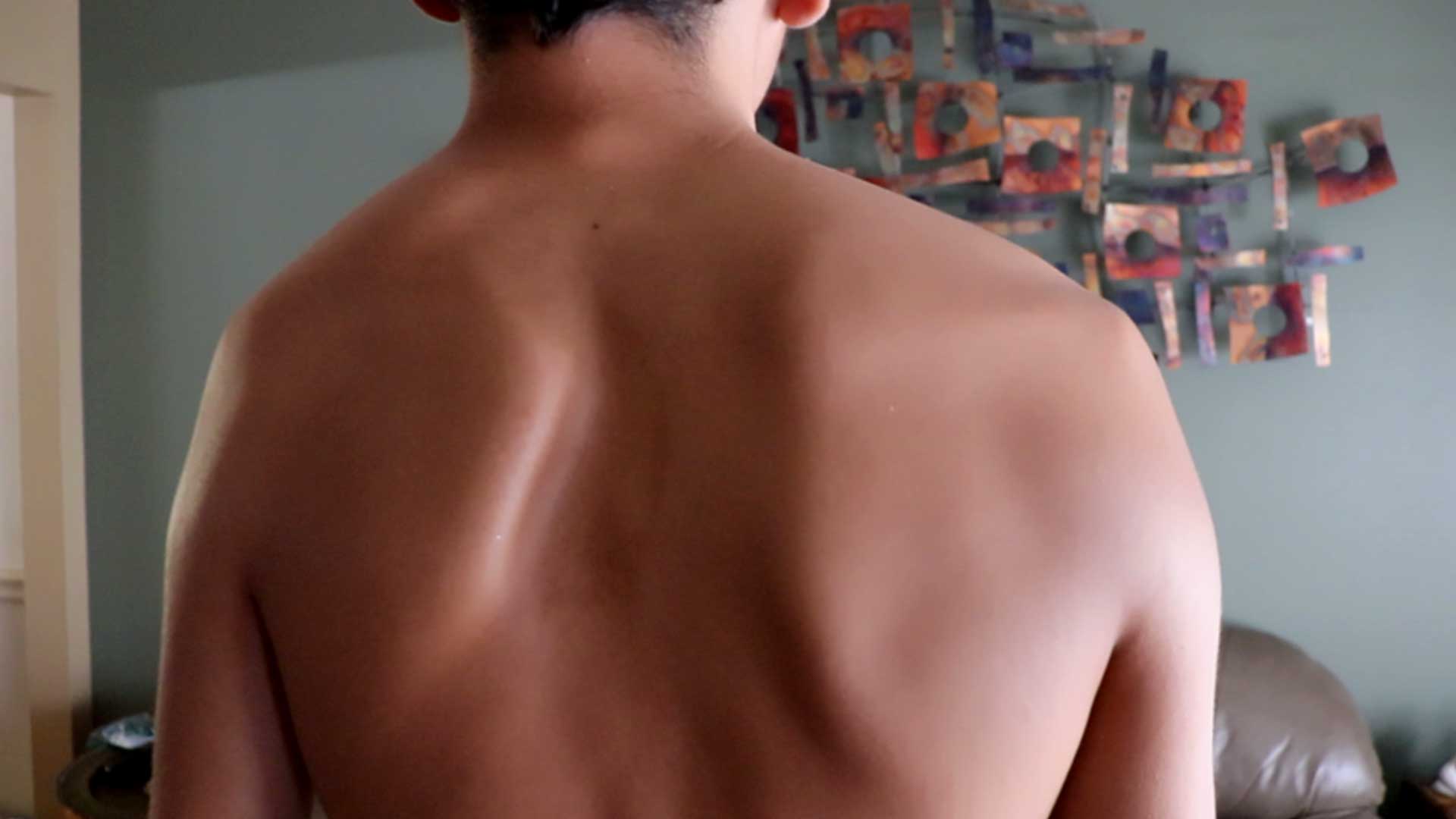
Sandra immediately brought her concerns forward to Weechi-it-te-win, the First Nations child welfare agency is technically Daniel’s legal guardian and responsible for his medical care and wellbeing.
Sandra was concerned about the difference in the elevation of Daniel’s shoulders and wanted to find out if he had been diagnosed with anything in the past. Up until that point, she had never received any disclosure on his medical history.
“There was no physical diagnosis of anything impacting him physically that was disclosed to us,” Sandra says.
“When I couldn’t get any answers that made any sense to me from Weechi-it-te-win, because I couldn’t understand how I could see something that appeared to me to be an obvious issue that had gone unaddressed, I took him to his family doctor and I told her what my concerns were and I had her do an assessment.”
What the doctor discovered in Daniel’s medical records shocked Sandra to her core.
Daniel has what’s known as Sprengel’s deformity, a rare congenital defect where one shoulder blade sits higher on the back than the other.
Sprengel’s Deformity can be corrected with surgery if identified early enough, according to many medical journals online.
Records show that medical officials suspected Sprengel’s Deformity just before Daniel turned four in late October 2009.
Read More:
First Nations Youth in care likely deformed for life, blames child welfare agency
Deformed youth demands proof child welfare agency has authority to keep him in foster care
But the records show that Daniel missed years of annual medical appointments as he got older, including an appointment with his specialist when he was eight-years-old.
Daniel and Sandra believe had he received the proper medical treatment and surgery at a young age, there’s a good chance his shoulder would have developed normally.
“It’s heartbreaking to know that he will carry something for the rest of his life, that he will always be compensating for and it could have been preventable,” Sandra says.
“And we don’t fully know some of the answers as to how preventable it was or what it could have looked like because there’s gaps in care.”
There were gaps in his medical records for almost five years in total.
‘It’s extremely frustrating to me that someone who was in care all that time – there should have been lots of eyes on him,” Sandra says.
“More eyes than in a regular home environment to make sure these things were not missed. He should have had more opportunities not less.”
It’s been more than two years now since Sandra first found out about Daniel’s medical issues.
She has been trying to get him the proper treatment, but because she isn’t technically his legal guardian she has go through Weechi-it-te-win.
Sandra says that dealing with the agency as a caregiver, has been shocking, heartbreaking and anything but reassuring.
“Trying to work with Weechi-it-te-win to get the medical care and the medical screening that he needs has been one of the most frustrating things that I have ever dealt with,” Sandra says.
“Frustrating and heartbreaking for him, because the reason that we are in this situation, that may not be able to be rectified, is because time went on and no one was doing what they were obligated to be doing.”
As his legal guardian, Weechi-it-te-win is responsible for his wellbeing, including annual medicals and treatment, according to the Child, Youth and Family Services Act.
Another part of the problem is that Daniel had no official case worker with Weechi-it-te-win for months up until just recently, something that Sandra says is common for youth in care of First Nations child welfare agencies in Northwestern Ontario.
“In lieu of a designated worker [was] actually the secretary or the receptionists for the community,” Sandra says, adding Daniel didn’t get a new worker until APTN began reporting on his condition.
“Unfortunately, it’s pretty common in these situations. There’s many children in that community alone that don’t have assigned workers and there’s not one set of eyes who’s responsible to oversee the file of that child.”
According to Sandra, that breeds chaos. She says, if no one’s responsible then no one is held accountable.
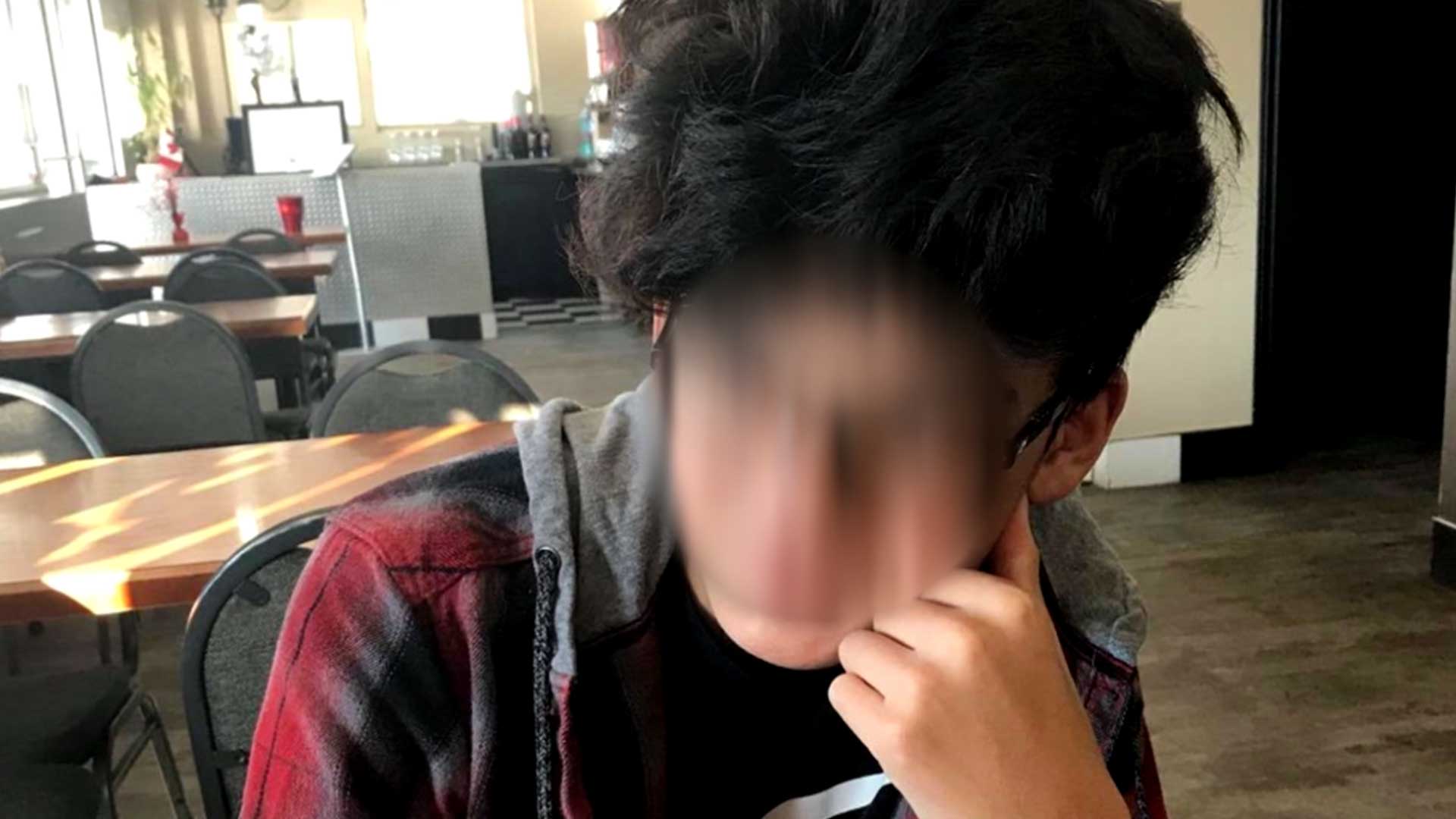
In Sandra’s eyes, Daniel is still very much that young boy who walked into their lives more than two years ago.
He’s a lot taller now, and still slim even though he gets plenty to eat – his family jokes that he is a carboholic – he’s never met a carb he didn’t like.
He still has a head full of unruly hair and he still wears large hoodies even on warm summer days.
He also still lives in a state of constant pain, but he manages, it’s all he’s ever known.
“Every morning when I wake up and reach my left arm up in the air to get in the shirt, I get this really sharp pain and it lasts for about a minute. It just doesn’t feel good,” Daniel says from his family’s home.
“I just get sudden strikes of pain in my back, it hurts more playing sports.”
“We know that he has significant range of motion issues,” Sandra adds. “He complains to me about pain, about back pain, I can see him compensating.”
“For him, it’s what he’s always known,” she continues. “So he doesn’t really understand the magnitude of how it impacts him. He doesn’t know the difference of what could have been and what is.”
At the age Daniel is now, the risks with surgery to correct Sprengel’s Deformity are more severe, and there is a chance he can lose what little range of motion he has left altogether, according to his doctors and medical records.
“I kind of want it really bad, make it so my left shoulder feels better and I can do as much as my right,” Daniel says.
“But I’m not sure, the doctors said that it could be a possibility of it going, making it worse. I don’t know, I’m just hoping if when I get the surgery, it will make it better instead of worse.”
And that’s what scares Sandra the most, the very real possibility of the surgery doing more damage, which is what his doctors have told him.
But he’s never seen a doctor that specializes in Sprengel’s Deformity to confirm. It’s something he is still waiting for.
“He wants the surgery because he wants to blend in. He’s always been separate his whole life, knowing he’s different, that he’s raised in care,” she says.
It’s a risk that Daniel is willing to take, but at only 15 years old, it’s a decision that no child should be forced to make.
“Really upset. It makes me mad. I don’t like it.” Daniel says.
“I know if I was in the situation they were in to do something, I would do it and not wait many years.”
Sandra has looked into adoption, not only because it’s what Daniel and the rest of the family want, but also to be able to provide him with the medical treatment he so desperately needs without having to go through Weechi-it-te-win.
But with customary care agreements adoption is next to impossible.
“It’s a very different situation,” Sandra says. “It’s not like when you’re in mainstream children’s aide and you can just decide if there’s a child and you want to adopt them.”
“Generally the communities don’t adopt the children, they remain the legal guardian of the child. The idea is to make sure the child’s best interests stay at the forefront, but also to make sure they maintain that community connection.”
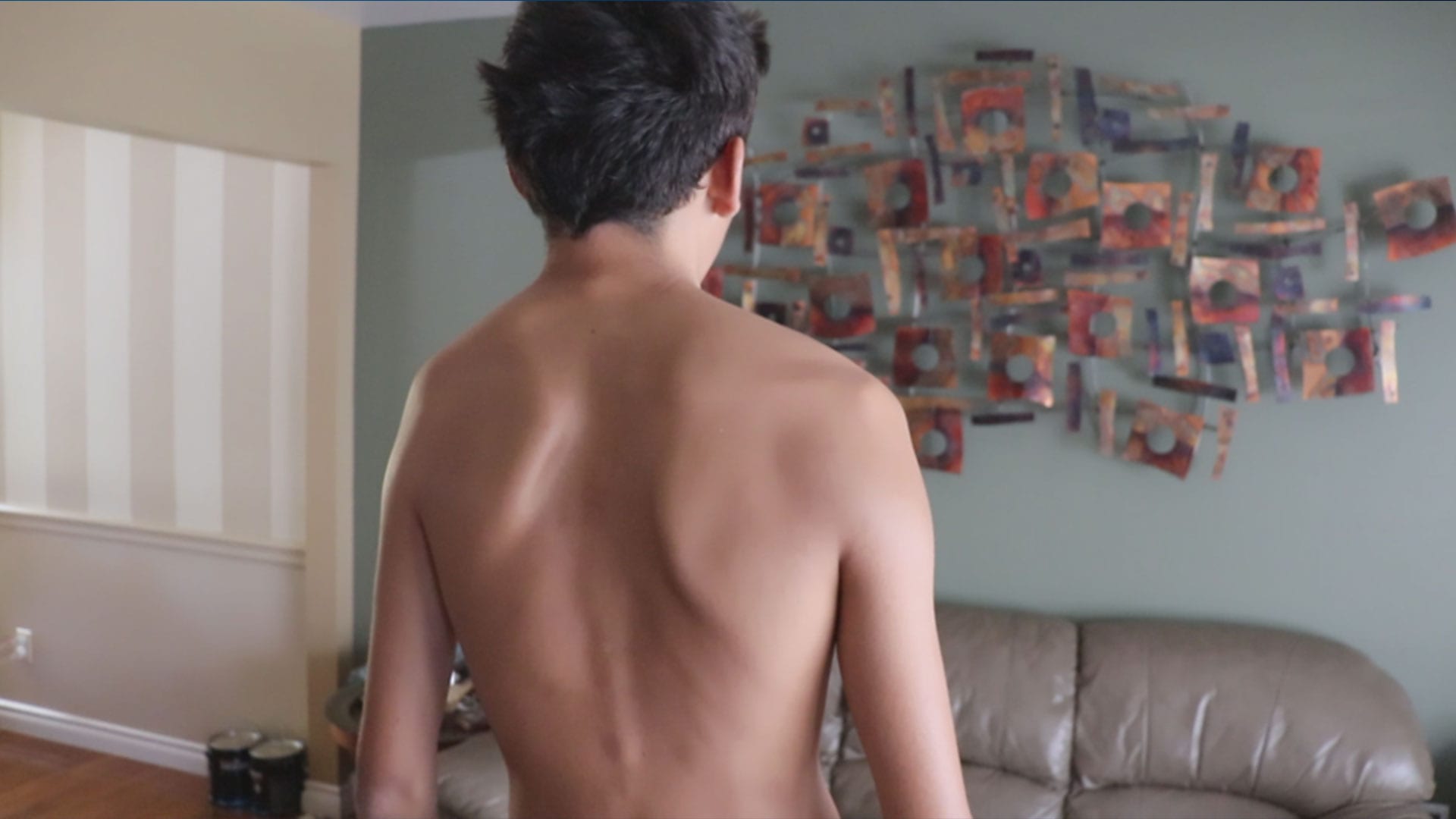
Sandra was concerned at first when Daniel told her that he wanted to share his story.
She was worried that people may be able to identify him, that others would know the terrible pain he suffers and what he went through growing up in care.
She didn’t think that she could properly express to him in words or prepare him for what sharing his story could entail.
“When we talked about sharing his story, I was the one saying I don’t think we should do it.” Sandra says.
“They’re going to know some of the things you’ve been through and you’re going to have to be prepared for that.”
Daniel didn’t hesitate with his response.
“All they have to do is look at me and they’ll see,” he replied.
For now Sandra, Daniel and their family have retained the services of Toronto based law firm Waddell Phillips to help get some answers.
They have been asking Weechi-it-te-win to provide any documentation relating to Daniel’s customary care agreement.
If Weechi-it-te-win won’t help Daniel get the help he needs then he wishes to be removed, once and for all, from agency’s care so he can finally get the medical help he needs to treat the Sprengel’s, which has worsened considerably under the agency’s watch.
“I think it’s the practicality of it, that he wants to be quote-unquote ‘normal’ whatever that means and to appear normal.” Sandra says.
“Just to be the same as everybody else around him.”
- This story was edited by Paul Barnsley.









